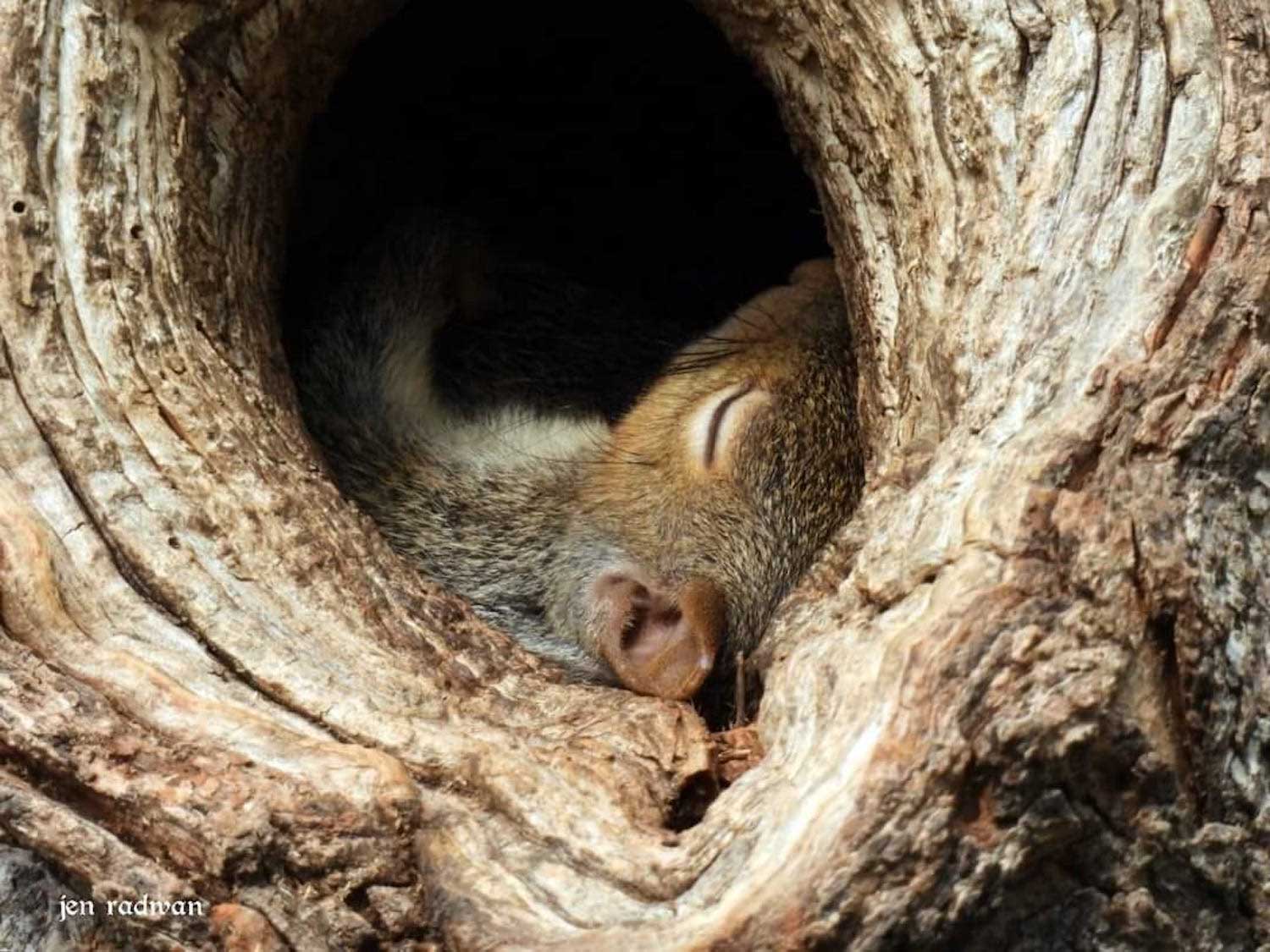Check your trees for nests before trimming or pruning

Yardwork is usually innocent enough. Raking leaves, cutting grass, weeding gardens and flowerbeds are things we check off our to-do lists throughout the spring and summer and into fall, but at this time of year we may add a few more tasks to our lists, things like preparing garden beds for planting and trimming and pruning trees and bushes.
But before you pull out the chainsaw and pruning tools, you might want to give your trees a good once-over to ensure they aren't housing any active squirrel or bird nests. Late winter and early spring are too early for songbird nests, but raptors like owls and hawks begin nesting in winter, with babies hatching in late winter or early spring. These nests are large and unlikely to go unnoticed in your trees, but the same is not necessarily true of squirrel nests.
Squirrel nests look a little different than a bird nest. Some squirrels may nest in tree cavities, but they also build nests, called dreys. Their nests look like balls of leaves, usually high in the tree but close to the trunk or in a fork of branches, according to the Woodland Trust.
Our tree squirrels have two breeding seasons, one in January and February and a second one in either late spring or early summer, according to Wildlife Illinois. Squirrels generally give birth to between two and four babies in each litter, although flying squirrels can have litters of up to seven babies. The mother will nurse the babies for about eight weeks, then they will remain in the nest for a few more weeks before making their way on their own.
Squirrel nesting season overlaps with the time when it is recommended that we trim or prune our trees. The University of Illinois Extension recommends that trees be pruned in February or March, when trees are still dormant. Pruning is recommended at this time not just because the trees are dormant, but also because without leaves filling the canopy it is easier to see the shape of the tree and decide which branches to prune or trim back.
While trees may be dormant at this time, they can still be full of life. That's why it's a good idea to keep an eye on any trees you plan on trimming for a few days before getting to work. Check any tree cavities for signs of life, and keep an eye on activity in the tree. If you see a lot of squirrel activity in your tree, particularly around dreys, it could be home to a nest.
If squirrels are nesting in your tree, avoid pruning or trimming areas near the nest until after the babies have left the nest — about 12 weeks after they are born. If the tree poses a danger to your home or other structures and must be removed, the Illinois Department of Natural Resources advises hiring a nuisance wildlife control operator to remove the squirrels beforehand. You can then seek out the advice of a wildlife rehabber in reuniting the baby squirrels with their mother.
If you find young squirrels on the ground, assess their age and health to determine if intervention is needed. A squirrel that is near full size can run and jump and has a fluffy tail can survive on its own. If the squirrel is still very small; hairless or without full fur; can't walk or jump; or follows or approaches people or pets, it may orphaned and require intervention, according to the Tufts Wildlife Clinic.
Before intervening, look to see if you can find a nest nearby. If so, the mother may be close. Give the squirrel some space and observe it from a distance to see if the mother returns for it by dusk, the wildlife clinic advises. If it's cold, you can prepare a container for the squirrel to keep it warm and safe. You can use a lid-less shoebox or similar-sized container, lining it with an old towel, blanket or shirt. Consider placing a hot water bottle or warming pad underneath to keep it warm, but make sure whichever item you choose to use is covered with a buffer (towel, blanket, etc.) and isn't too hot so that the baby squirrel gets burnt.
If the mother doesn't return by dusk, consider it orphaned. If possible, place the baby squirrel in a sock or wrap it in a scarf, cloth diaper or similar cloth or fabric and take steps to keep it warm, the wildlife clinic advises. You can use a hot water bottle, taking care to replace it every 30 minutes; a heating pad set on the lowest setting; or a hand warmer placed inside a sock. If the squirrel does not appear injured or sick, place it and the warming device in a small box or carrier.
Before handling an animal, prepare a container for it, and make sure the container has proper airflow, the wildlife center suggests. Once you've captured the squirrel, place a thick towel over it and immediately place it in the prepared container with a secure lid. If you are not immediately transporting the animal to a licensed wildlife rehabilitator, place it in a warm, dark spot where it is quiet. Do not feed or give water to the animal; this could result in further injury or death.
If you are in need of someone to assist with the animal, you can find a list of state licensed wildlife rehabilitators organized by county on the Wildlife Illinois website. In Illinois, squirrels are protected by the Illinois Wildlife Code. In urban areas, squirrels may only be trapped and released if a permit has been issued by a wildlife biologist for the Illinois Department of Natural Resources.
